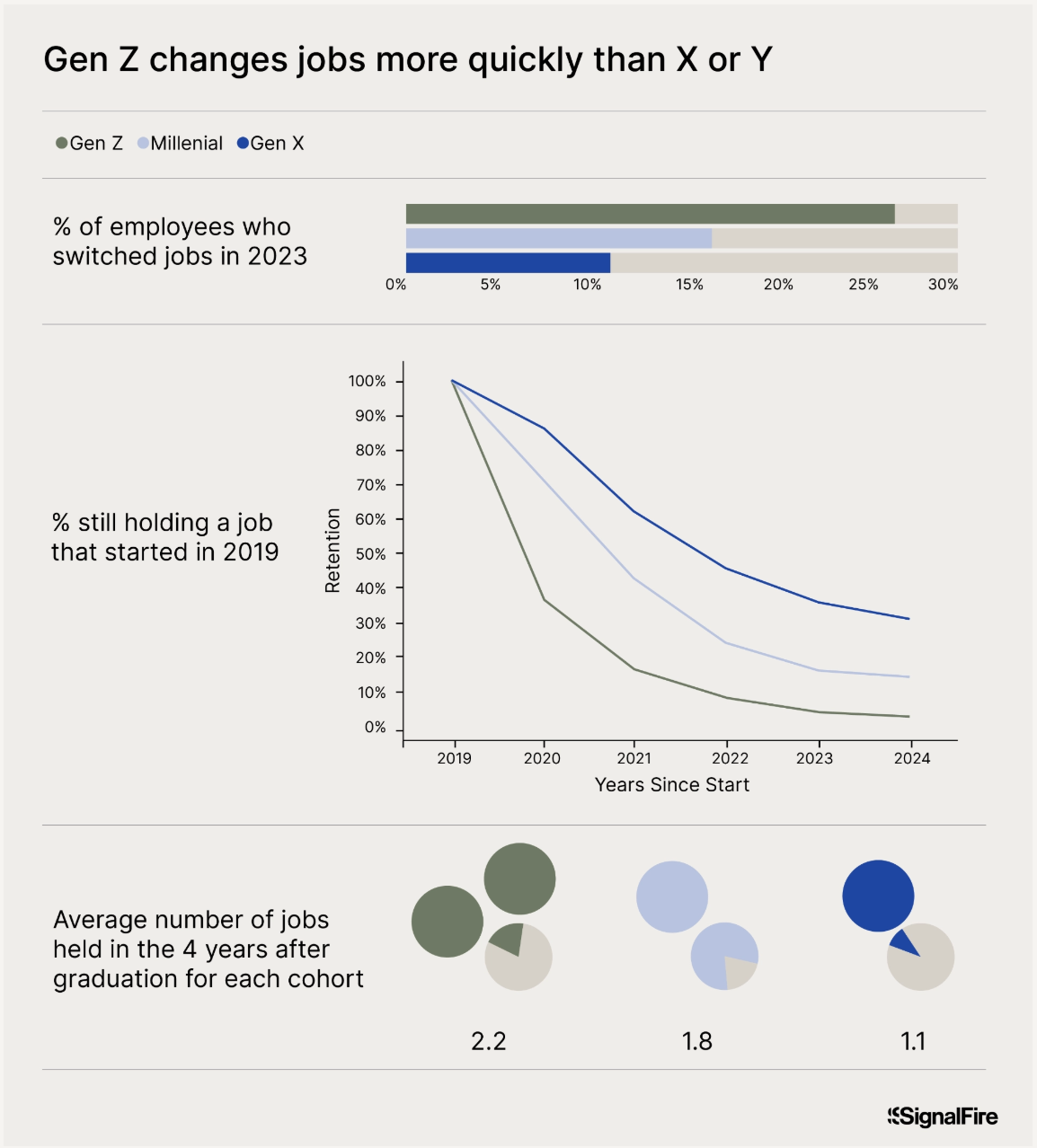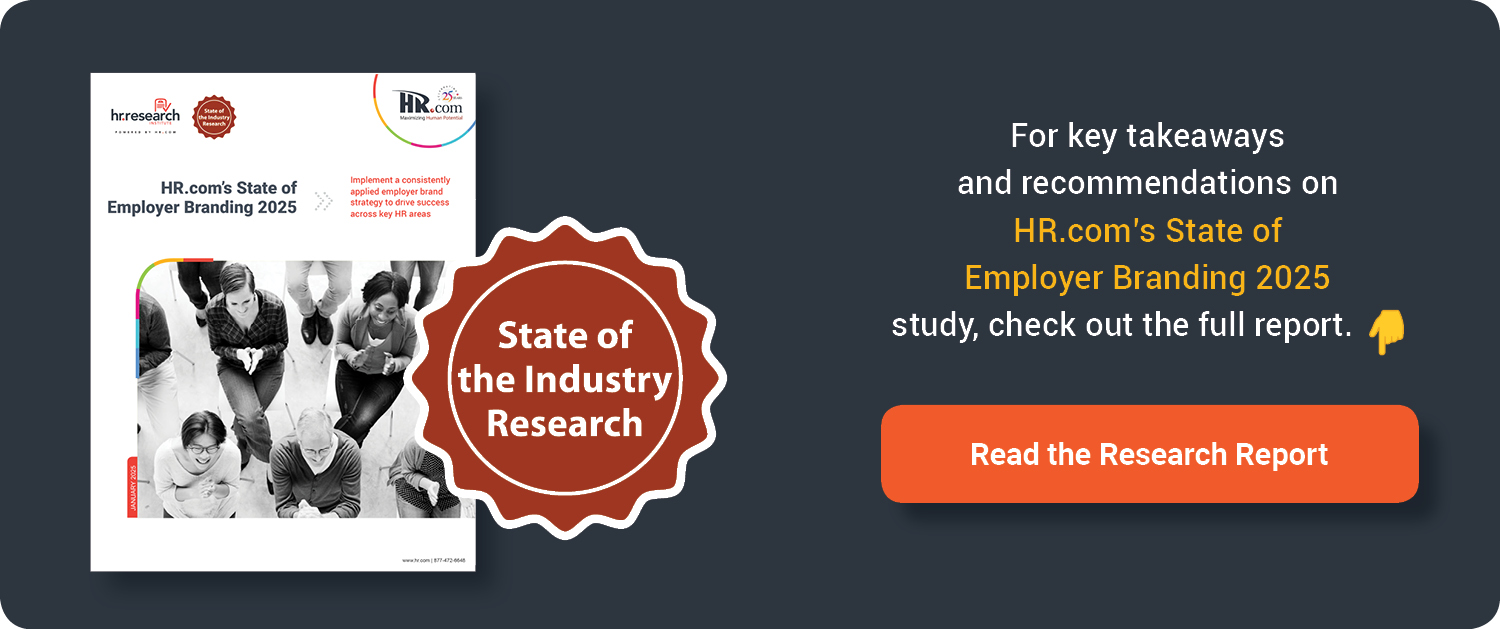HR.com’s State of Employer Branding 2025
Implement a consistently applied employer brand strategy to drive success across key HR areas
Posted on 02-19-2025, Read Time: 6 Min
Share:

Highlights:
- A majority say their employer brand is above average or excellent at enhancing the reputation of their organizations, but that’s not true in other key HR-focused areas.
- Only 36% of today’s companies have dedicated sufficient resources to develop an intentionally cultivated employer brand.
- There are various barriers related to successful brand creation.
Our study also finds only 28% of organizations have a consistently applied and comprehensive employer branding strategy in place. This lack of consistency may help explain why branding initiatives tend to be better at enhancing reputation than at aiding key HR priorities such as retention, recruitment, and engagement.
In ‘HR.com’s State of Employer Branding 2025’, we share insights both into branding successes and challenges. Along the way, we discuss and elaborate on branding practices that are linked to building stronger employer brands.
How Successful Are Today’s Employer Brands?
Finding: A majority say their employer brand is above average or excellent at enhancing the reputation of their organizations, but that’s not true in other key HR-focused areas
We asked respondents to rate their employer brand on its ability to improve five key HR areas. While 62% believe their employer brand is above average or excellent at enhancing company reputation, less than half believe the same to be true about the other key areas specifically related to talent managements:
- diversity, equity, inclusion, and belonging (46%)
- talent attraction (44%)
- employee engagement (43%)
- employee retention (42%)
The bottom line is that today’s employer brands tend to be better at enhancing reputation than at doing more practical, HR-focused work.
While this may please marketing professionals, whose business it is to burnish corporate brands, it should not please HR professionals to the same extent. What they need most are brands that help engage, attract, and retain great employees.
Are Organizations Investing in Employer Brands?
Finding: Only 36% of today’s companies have dedicated sufficient resources to develop an intentionally cultivated employer brand
How can an organization effectively cultivate a robust employer brand? While there is no one-size-fits-all solution, having dedicated resources (such as budget, internal team, and external agency support) plays a crucial role.Our data highlights a significant gap in employer branding maturity across organizations. While 36% of companies have sufficient resources to develop an intentionally cultivated brand, 34% say that they have dedicated resources to such a brand but that the resources are insufficient.
Meanwhile, 11% say they lack both an intentionally cultivated brand and resources dedicated to the development of that brand.
Barriers to Successful Employer Branding
Finding: There are various barriers related to successful brand creation

Insufficient personnel devoted to branding is the top barrier at 45%. Many (39%) also deal with insufficient financial resources. Three barriers are tied for third place at 35%, and they are:
- lack of interest from leadership
- lack of data/metrics
- time constraints
This year’s findings are similar to last year’s top barriers: lack of financial resources, insufficient personnel, lack of time, lack of data/metrics, and lack of know-how about the topic. These barriers are often interlinked. For example, if an organization is struggling with a lack of interest from leadership, branding efforts are likely to have insufficient financial resources and insufficient personnel.
If organizations lack data/metrics, it becomes incredibly challenging for organizations to determine potential pain points in their strategy.
Without robust analytics, organizations find it difficult to identify potential pain points in their strategy, measure the effectiveness of their efforts, or justify increased investment in employer branding.
This data deficit can lead to inefficient resource allocation and missed opportunities for improvement.
Time constraints further compound these issues. With limited time to dedicate to employer branding, teams may struggle to develop comprehensive strategies, create engaging content, or analyze the results of their efforts. This can result in a superficial approach to employer branding that fails to resonate with potential candidates or current employees.
Error: No such template "/CustomCode/topleader/category"!


